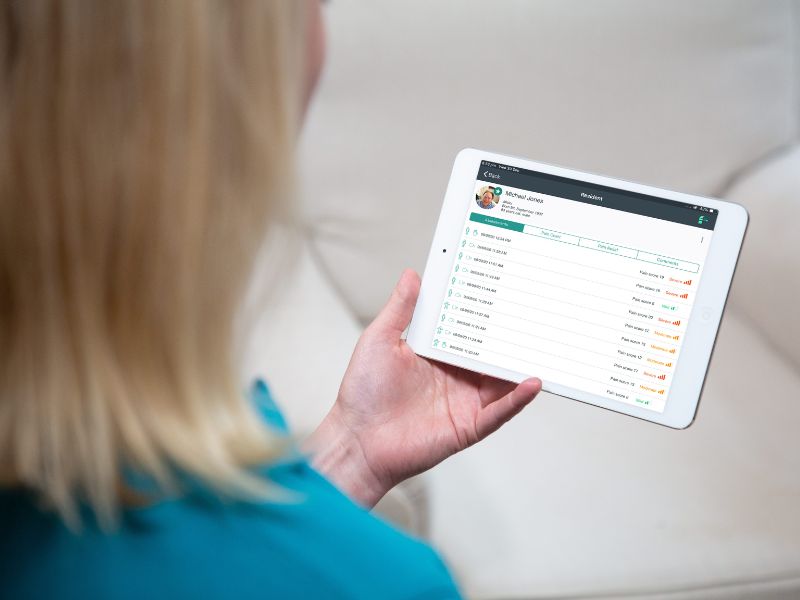Improve Pain Management with PainChek® Analytics
PainChek® Analytics, a built-for-purpose data intelligence portal, is available to all PainChek clients (at no extra cost) to help improve pain management and clinical outcomes for people.
By consolidating historical pain assessment data, PainChek® Analytics provides clinicians with valuable and actionable insights that can support early detection of changes in pain trends, inform decision-making, personalise care planning, reduce clinical risks, and deliver consistent, high-quality care.
For providers with advanced technological capabilities, PainChek® Analytics can easily be sent directly into databases via our API. This smooth integration lets clinicians make the most of our sophisticated analytics within existing systems. By connecting our API to databases, clinicians instantly access valuable insights that drive data-based outcomes.

How it Works
PainChek® Pain Assessment Solution provides comprehensive data on pain assessment outcomes and activities, both at the individual level and for facilities and organisations.
With PainChek® Analytics, this data is available in real-time, equipping healthcare professionals with valuable information that can improve pain management practices and patient outcomes across various levels of care.
Our analytics provide insights into all aspects of pain management practices, from basic metrics such as daily assessment frequency to evidence-based personalised pain ’red flags’ that can inform care planning.

Features
Utility, Pain, and Resident Trend Dashboards
- Allows clinicians to focus on utility and pain trends, or deep dive into the pain of an individual with targeted real-time dashboards.
- Supports clinicians to see specific information needed to monitor quality, compliance, and care with no distractions and no need to search through multiple reports for key data.
Real-Time Reports
- Enables healthcare professionals to manage clinical risks by providing a real-time report showing those who have active pain identified in an assessment over 24 hours ago, requiring an immediate follow up assessment.
- Ensures that pain is identified early by providing a real-time report of those who have not received a baseline pain assessment as per the minimum assessment guideline recommended by leading industry bodies.

How it Works
PainChek® Pain Assessment Solution provides comprehensive data on pain assessment outcomes and activities, both at the individual level and for facilities and organisations.
With PainChek® Analytics, this data is available in real-time, equipping healthcare professionals with valuable information that can improve pain management practices and patient outcomes across various levels of care.
Our analytics provide insights into all aspects of pain management practices, from basic metrics such as daily assessment frequency to evidence-based personalised pain ’red flags’ that can inform care planning.
Testimonials
“The reporting dashboard from PainChek® Analytics provides significant data that allows us to track both assessments and follow-up action. For us, this has been applied as a daily discipline to ensure all assessments are followed up and any remedial treatments have reduced pain levels for the residents.”
Ken Gao, Aged Care Nurse, St Louis Aged Care Parkside, Australia
“PainChek® enables easy record-keeping which can be integrated with existing software record systems. It provides accountable and clear record-keeping and evidence availability for staff, GPs and for auditing purposes.”
Jim Murray, Facility Manager, Allambie Heights Village Ltd, Australia
“With the data in PainChek® we can see trends, like how often pain assessment has been done, whether medication was given and if it had any impact on the person’s pain level. We can then make strategic decisions based on that, in consultation with doctors.”
Francesca Glamorgan, Director of Nursing, St Mary’s Villa Residential Aged Care, Australia
Interested in implementing PainChek® in your facility?
Book a session with our team to learn more about how PainChek® works.
"*" indicates required fields



